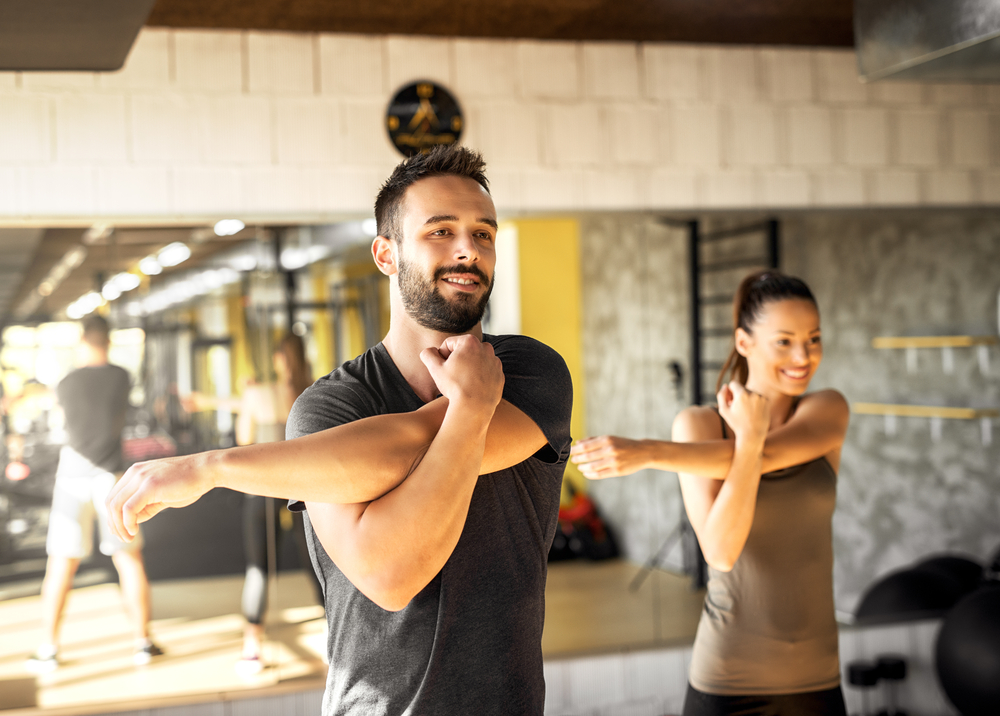The Importance of Warm-Up and Cool-Down Exercises: A Comprehensive Guide

In the dynamic world of fitness, where everyone seems to be chasing their next personal record or pushing the limits of endurance, it’s easy to bypass the essential rituals that bookend your workout – warm-up and cool-down exercises. Yet, within these often-neglected bookends lies the secret to unlocking a safer, more effective, and rewarding fitness journey. In this comprehensive guide, we embark on an enlightening journey into the pivotal role played by warm-up and cool-down exercises, illuminating why they are indispensable components of any successful fitness regimen.
Understanding the Basics
Before we delve into the finer details of warm-up and cool-down exercises, let’s establish a foundational understanding of these critical terms. Warm-up exercises act as the curtain-raiser for your workout, orchestrating a gradual awakening of your body. They elevate your heart rate, stimulate blood flow, and prepare your muscles for the impending physical challenges.
Conversely, cool-down exercises serve as the graceful encore, guiding your body from a state of exertion to one of tranquility. As we navigate through the pages of this guide, you’ll discover the profound benefits these routines bring to your fitness journey, and you’ll gain a newfound appreciation for the wisdom of incorporating them into your daily exercise routine.
The Importance of a Proper Warm-Up
Imagine your body as an engine. Just as you wouldn’t rev up a cold engine and expect it to perform at its best, you shouldn’t expect your body to go from a state of rest to high-intensity exercise without some preparation. That’s where the warm-up comes in.
1. Increased Blood Flow and Oxygen Delivery
The first and foremost purpose of a warm-up is to increase blood flow to your muscles. When you engage in physical activity, your muscles require more oxygen and nutrients to function efficiently. A proper warm-up gradually elevates your heart rate, dilates your blood vessels, and ensures that oxygen-rich blood is delivered to your muscles. This not only provides the necessary fuel for your workout but also helps reduce the risk of premature muscle fatigue.
2. Improved Muscle Flexibility
Have you ever tried stretching a cold rubber band? It’s likely to snap. Muscles, in a way, function similarly. Cold muscles are less elastic and more prone to injury. Warm-up exercises gently increase your muscle temperature, making them more pliable and less likely to strain or tear. This improved flexibility enhances your range of motion, allowing for more extensive and effective movements during your workout.
3. Mental Preparation
A warm-up isn’t just about preparing your body; it’s an opportunity to prepare your mind. When you engage in warm-up exercises, you shift your focus to the upcoming physical activity. You can set your workout goals, mentally rehearse your movements, and establish a strong mind-muscle connection. This mental readiness can significantly impact your overall workout performance.
4. Injury Prevention
Perhaps the most crucial aspect of a warm-up is its role in injury prevention. Cold muscles and connective tissues are more susceptible to injury. By gradually increasing the temperature and blood flow to your muscles, a warm-up helps reduce the risk of strains, sprains, and other exercise-related injuries. It’s a vital step in keeping you safe and injury-free during your workout.
5. Enhanced Performance
A proper warm-up can significantly enhance your overall workout performance. When your muscles are adequately warmed up, they contract more efficiently. This means you can lift heavier weights, run faster, and perform better in your chosen activity. Enhanced performance often leads to greater gains and faster progress in your fitness journey.
Components of an Effective Warm-Up
Now that you understand why warm-up exercises are essential, let’s break down the components of an effective warm-up routine:
Aerobic Exercise: Start with five to ten minutes of light aerobic activity. This could be brisk walking, jogging in place, jumping jacks, or cycling on a stationary bike. The goal is to gradually increase your heart rate and breathing rate.
Dynamic Stretches: After your aerobic warm-up, incorporate dynamic stretches. These involve controlled, active movements that take your joints and muscles through a full range of motion. Examples include leg swings, arm circles, and hip rotations. Dynamic stretches help improve flexibility and mobility.
Sport-Specific Movements: If you’re engaging in a specific sport or activity, incorporate sport-specific movements into your warm-up. For example, if you’re about to play tennis, practice some light forehand and backhand swings. If you’re heading to a yoga class, perform a few sun salutations to prepare your body for the poses ahead.
Gradual Intensity Increase: Throughout your warm-up, gradually increase the intensity of your movements. Start with low-intensity exercises and build up to movements that mimic the intensity of your main workout. This progression ensures a seamless transition into your primary exercise routine.
Mental Focus: During your warm-up, take the time to mentally prepare for your workout. Visualize your goals, focus on your breathing, and mentally rehearse the movements you’ll be performing. This mental engagement can help you stay motivated and perform at your best.
In essence, a proper warm-up is the bridge between inactivity and vigorous exercise. It primes your body physically and mentally, reducing the risk of injury and optimizing your performance. It’s a small investment of time that pays significant dividends in your pursuit of a healthier, fitter you. So, the next time you’re tempted to skip your warm-up or rush through it, remember the essential role it plays in your fitness journey and give it the attention it deserves.
Components of an Effective Warm-Up
Now that you understand why a warm-up is crucial, let’s dive deeper into the specific components of an effective warm-up routine. These elements work together to prepare your body for the demands of your workout, reducing the risk of injury and enhancing your overall performance.
1. Aerobic Exercise (5-10 minutes)
A great warm-up begins with a gradual increase in heart rate and body temperature. This is achieved through light aerobic exercise. Spend about 5-10 minutes engaging in activities like brisk walking, jogging in place, jumping jacks, or cycling on a stationary bike. The aim is not to exhaust yourself but to gently elevate your heart rate and breathing rate. Aerobic exercise increases blood flow to your muscles, making them more receptive to the upcoming physical demands.
2. Dynamic Stretches (5-10 minutes)
After your aerobic warm-up, it’s time to incorporate dynamic stretches. Dynamic stretches are active movements that take your joints and muscles through a full range of motion. Unlike static stretches (which you save for your cool-down), dynamic stretches are about controlled and fluid movements. Some examples include leg swings, arm circles, hip rotations, and torso twists. These exercises help improve flexibility, increase joint mobility, and prepare your muscles for the movements you’ll perform during your workout.
3. Sport-Specific Movements (5-10 minutes)
If you’re engaging in a specific sport or activity, integrating sport-specific movements into your warm-up is crucial. These movements mimic the motions and demands of your chosen activity, making your body more attuned to the upcoming challenges. For example, if you’re heading to a basketball game, practice dribbling and shooting at a moderate pace. If you’re preparing for a strength-training session, start with bodyweight exercises that mimic the motions of your lifts. Sport-specific movements ensure that your muscles and joints are adequately prepared for the unique demands of your workout.
4. Gradual Intensity Increase
Throughout your warm-up, it’s important to progressively increase the intensity of your movements. Begin with low-intensity exercises and gradually build up to movements that closely resemble the intensity of your main workout. This gradual progression prevents shock to your system and ensures a seamless transition into your primary exercise routine. It also gives your body time to adapt and prepares your cardiovascular system for increased demand.
5. Mental Focus
While warming up your body, take the opportunity to warm up your mind as well. Use this time to mentally prepare for your workout. Visualize your goals for the session, focus on your breathing, and mentally rehearse the movements you’ll be performing. This mental engagement can help you stay motivated, enhance your mind-muscle connection, and set the tone for a productive workout.
Incorporating these components into your warm-up routine will ensure that you are well-prepared for the challenges ahead. A well-structured warm-up not only reduces the risk of injury but also optimizes your performance, allowing you to get the most out of your workout. Remember, consistency is key, so make warm-up exercises a non-negotiable part of your fitness regimen. Your body will thank you with improved performance and fewer aches and pains along the way.
The Cool-Down: Why It’s Equally Important
As the last few notes of your workout playlist fade away, it’s tempting to wrap up your exercise session abruptly and move on to the next task. However, the cool-down phase of your workout is not to be underestimated; it’s an essential component that deserves your attention. Here’s why the cool-down is equally important as the warm-up:
1. Prevents Blood Pooling
During intense exercise, your blood vessels dilate to accommodate increased blood flow to your muscles. If you stop abruptly without a proper cool-down, blood can pool in your extremities, leading to dizziness or even fainting. The cool-down allows your heart rate to gradually return to its resting rate, helping to prevent this issue.
2. Reduces Muscle Soreness
One common complaint after a strenuous workout is muscle soreness, also known as delayed onset muscle soreness (DOMS). Engaging in a cool-down routine can help reduce the severity and duration of DOMS. It aids in the removal of metabolic waste products that accumulate during exercise, promoting a smoother recovery process.
3. Promotes Recovery
The cool-down provides a bridge between intense physical activity and rest. It allows your body to gradually transition to a state of relaxation and recovery. During this phase, your heart rate stabilizes, and your breathing returns to a normal rhythm. This controlled descent from exercise intensity encourages a smoother recovery process.
4. Enhances Flexibility
Similar to the warm-up, cool-down exercises can help improve flexibility. When your muscles are warm, stretching them during the cool-down can lead to increased range of motion. This is particularly beneficial for maintaining or improving overall flexibility, which contributes to better joint health and reduced injury risk.
5. Mental Relaxation
The cool-down phase offers more than physical benefits; it provides a moment of mental relaxation and reflection. After an intense workout, take a few moments to unwind both physically and mentally. Reflect on your achievements during the session, set new goals, and acknowledge your progress.
In summary, the cool-down phase of your workout is a vital part of your fitness routine. It prevents potential health issues, reduces muscle soreness, aids in recovery, enhances flexibility, and promotes mental relaxation. It’s the transition point that allows your body to recover gracefully from intense exercise. Therefore, make sure to allocate time for a proper cool-down after each workout, as it plays a significant role in keeping you healthy and injury-free on your fitness journey.
Components of an Effective Cool-Down
Components of an Effective Cool-Down
Now that we’ve explored the importance of a proper warm-up, let’s shift our focus to the cool-down phase of your workout. An effective cool-down is just as crucial as a warm-up for several reasons, including recovery and injury prevention. To ensure you get the most out of your cool-down, consider these key components:
1. Gradual Intensity Reduction
Begin the cool-down phase by gradually reducing the intensity of your exercise. If you’ve been running, slow down to a brisk walk or even a leisurely stroll. If you’ve been lifting weights, decrease the weight and perform lighter repetitions. This gradual reduction in intensity allows your body to transition from a state of exertion to one of rest without sudden shock to your system.
2. Static Stretching (5-10 minutes)
Static stretching is a hallmark of the cool-down phase. Focus on stretching the major muscle groups you’ve worked during your workout. Hold each stretch for 15-30 seconds, breathing deeply and never forcing your muscles. Stretching helps improve flexibility, prevent muscle tightness, and reduce the risk of post-workout muscle soreness.
3. Foam Rolling (5-10 minutes)
Foam rolling, also known as self-myofascial release, can be a valuable addition to your cool-down routine. Using a foam roller, target areas of muscle tightness or soreness. Roll back and forth slowly over these areas, applying gentle pressure. Foam rolling aids in releasing muscle knots, improving circulation, and reducing muscle tension.
4. Deep Breathing and Relaxation (5 minutes)
Use the cool-down phase as an opportunity to practice deep breathing and relaxation techniques. Take slow, deep breaths to help lower your heart rate and promote a sense of calm. This mental relaxation not only aids in physical recovery but also reduces stress and promotes a sense of well-being.
5. Hydration
After your workout, it’s essential to rehydrate. Exercise leads to fluid loss through sweat, and proper hydration is crucial for overall health and muscle function. Drinking water helps replenish lost fluids, aids in recovery, and supports various bodily processes.
Incorporating these components into your cool-down routine can significantly enhance your post-workout experience. It helps your body transition smoothly from exercise to rest, reduces the risk of injury, and promotes recovery. Cool-down exercises are not just an afterthought but a crucial part of your overall fitness regimen, ensuring that you continue to progress safely and effectively on your fitness journey.
The Power of Comprehensive Warm-Ups and Cool-Downs
In the pursuit of fitness, every step counts, from the initial warm-up to the final cool-down. These often-overlooked bookends to your workout are not mere formalities; they are the cornerstones of a safer, more effective, and injury-free fitness journey.
So, as you lace up your sneakers and prepare to embark on your fitness journey, remember that every workout deserves a comprehensive warm-up and cool-down. They are your steadfast companions on this path to health and well-being.
For all your fitness needs, whether you’re seeking expert guidance, state-of-the-art equipment, or a supportive community, we invite you to contact Fitness CF. We’re here to support you in your quest for a healthier, fitter you.







